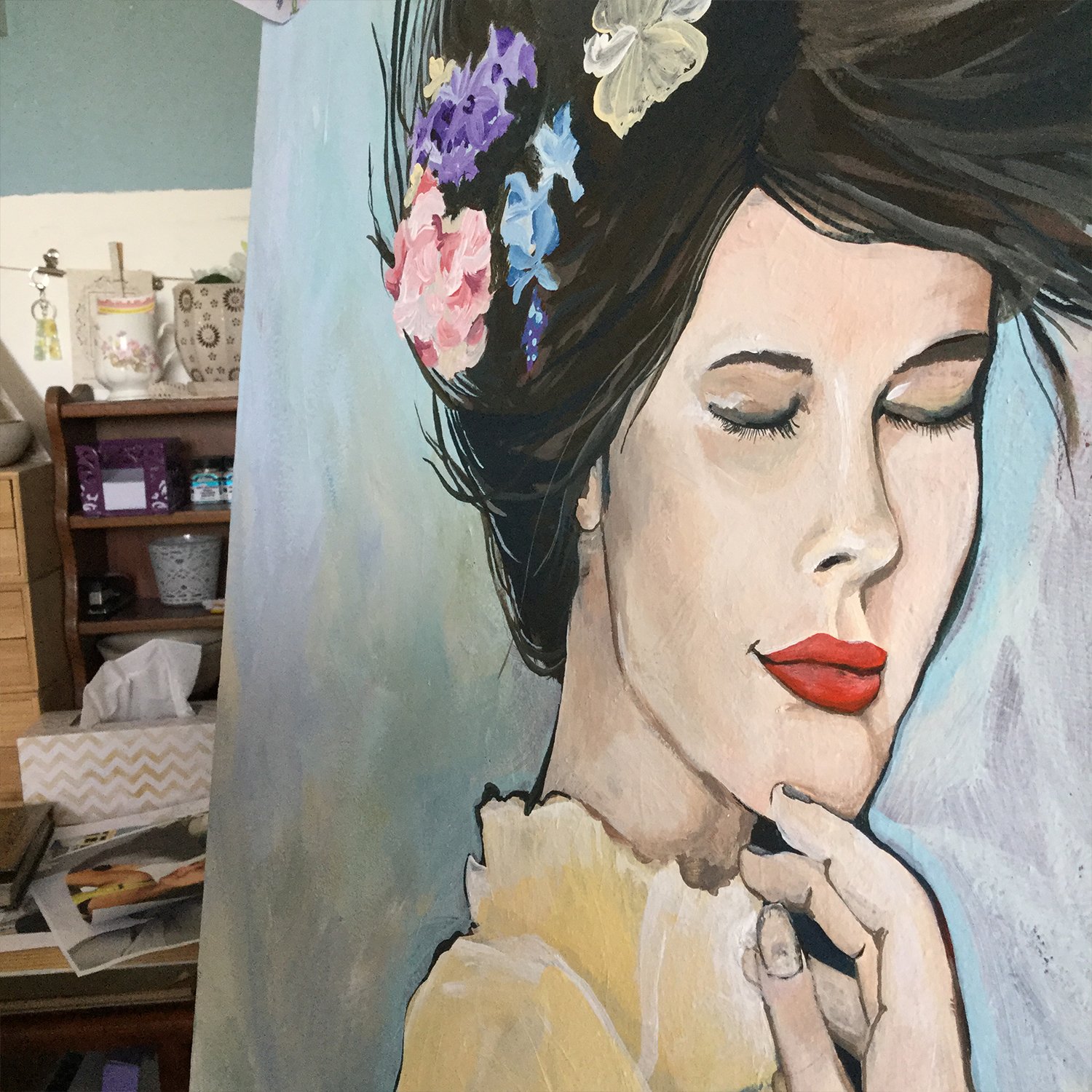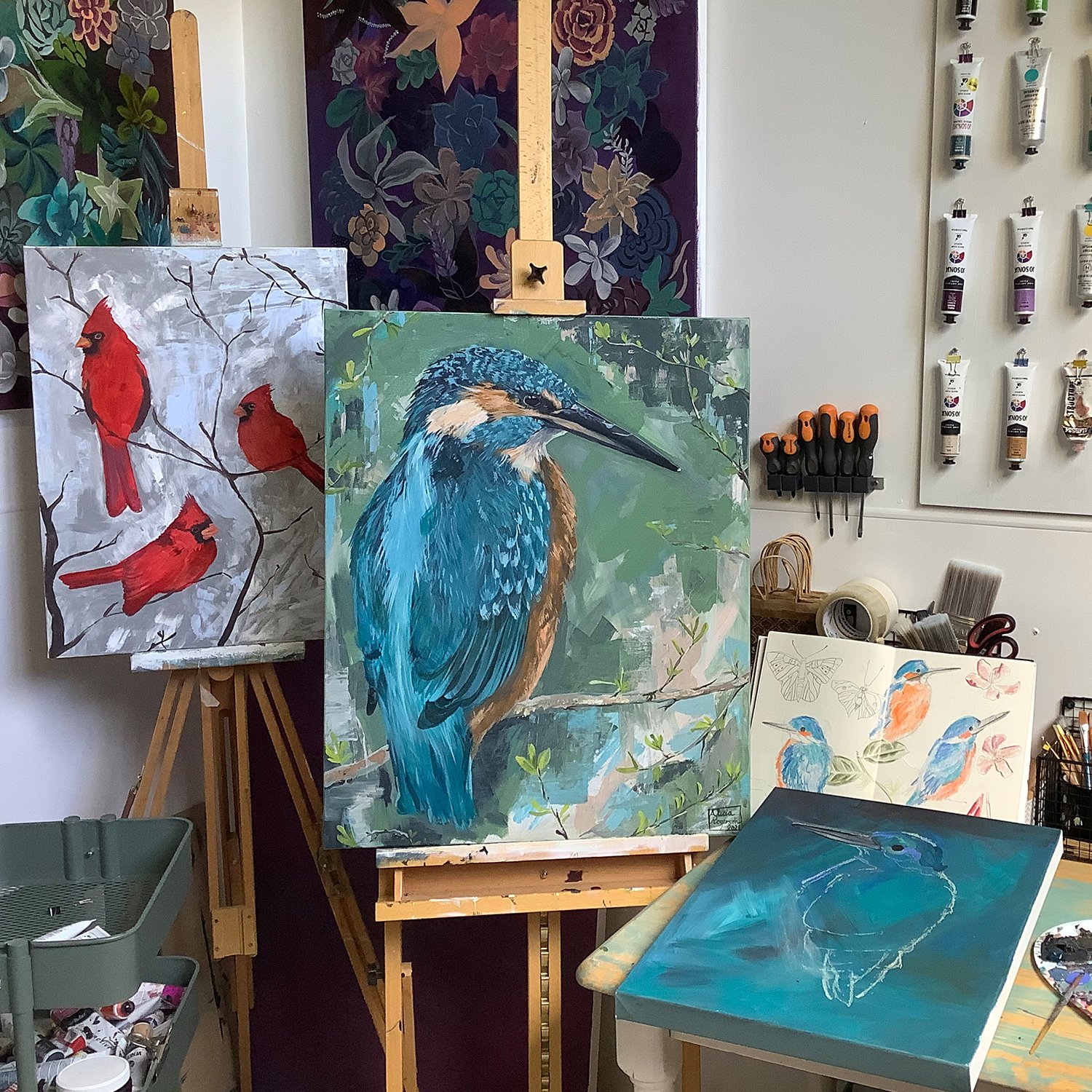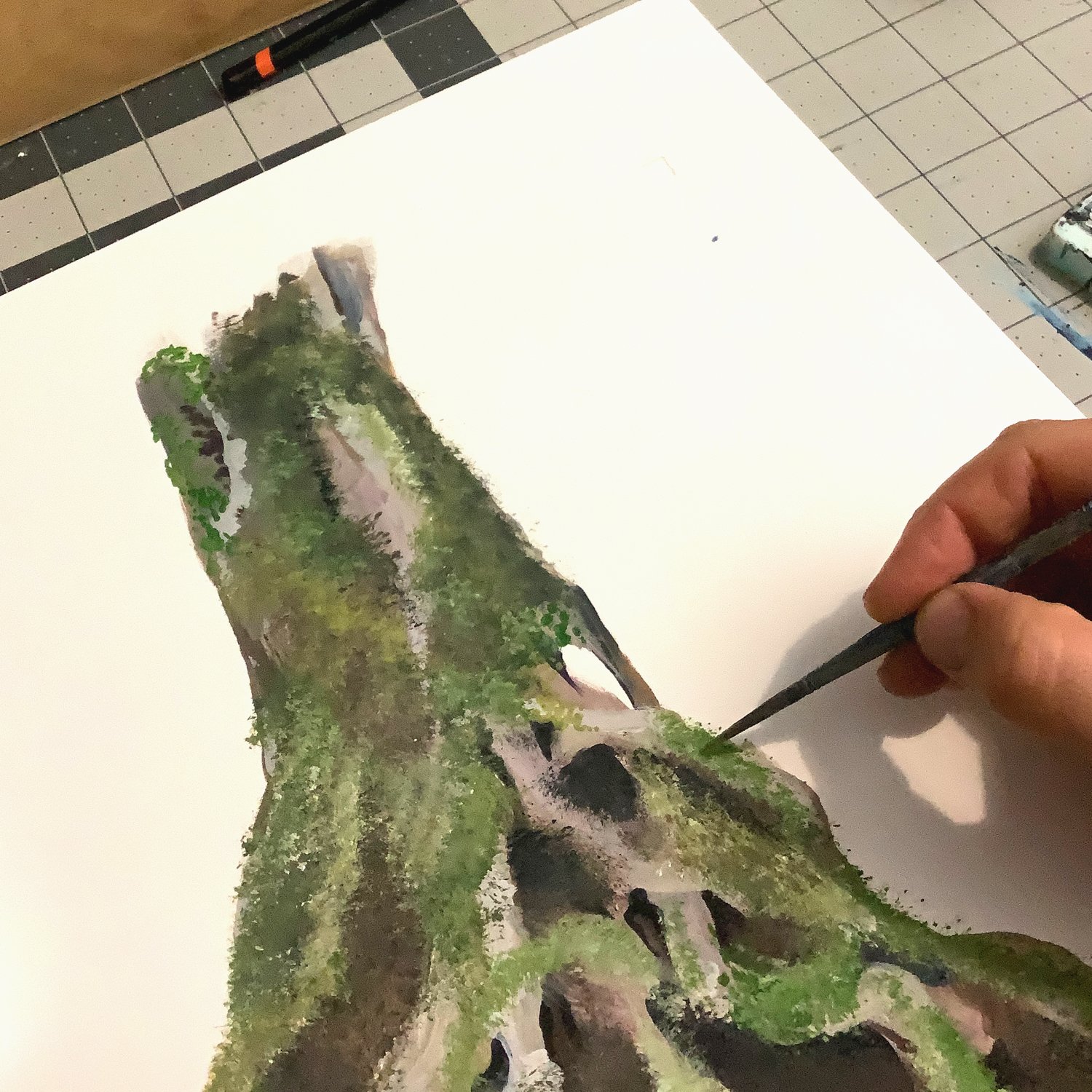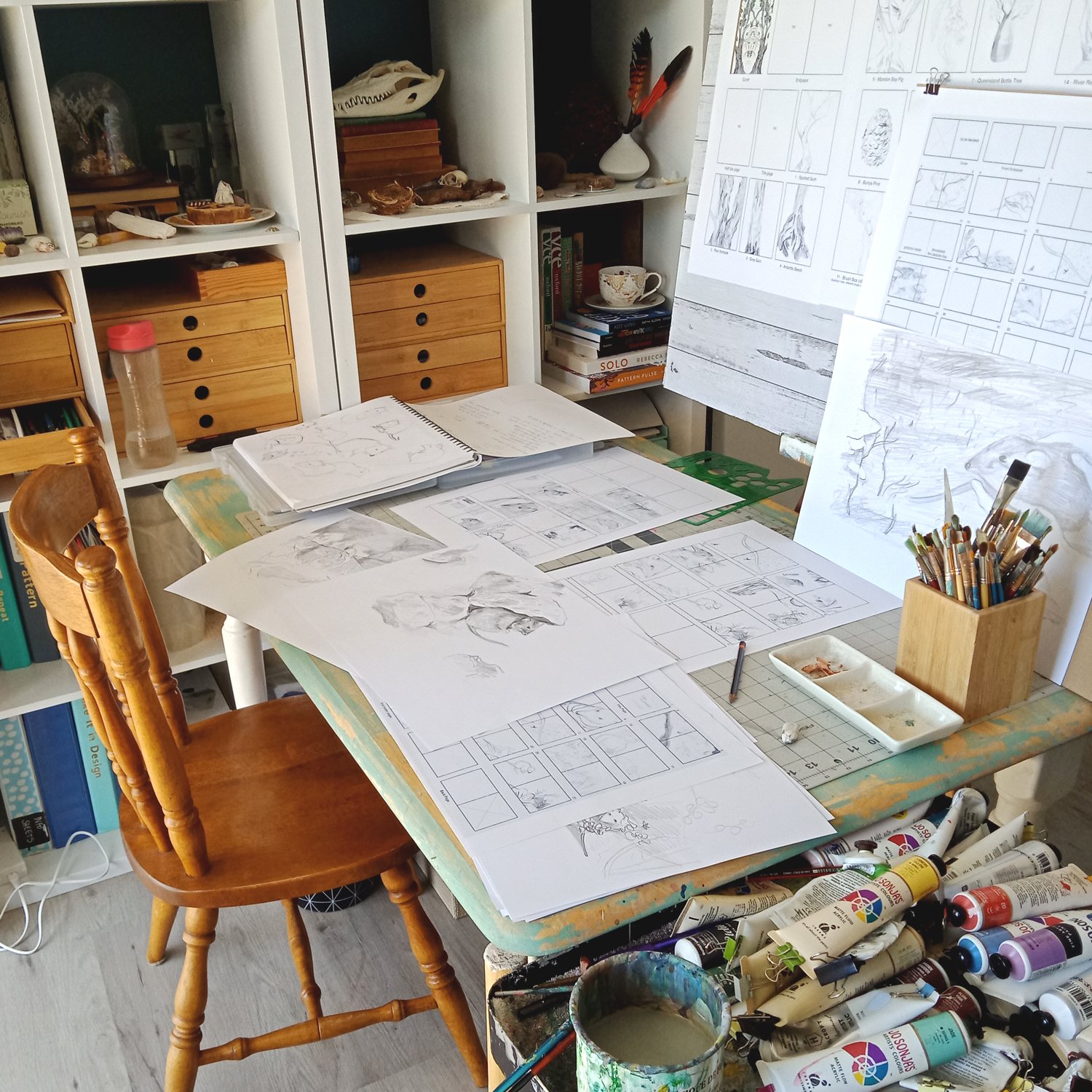Frequently Asked Questions
How did you become an artist/illustrator?
I always wanted to be a vet, but wasn’t very good at maths/science. So when I left school I studied Interior Decoration, then Fine Art. I did not enjoy the contemporary focus and left the course halfway through to work in the “real world”. Then one day I woke up realising the disconnection to my creativity left me empty, so I started creating art again and put it online. I went back to college to finish my degree, studied some more and I now create something everyday.
How do you start a work?
Like most people, I struggle with blank white pages. The first step is to dive into researching the subject that I’m bringing to life. Focusing on shapes, colours, interesting facts that might be an interesting detail to incorporate. I take pictures, print off information, take notes.
Then I sketch out lots and lots of ideas, thoughts and whatever else comes to mind. At some stage in this process I’ll often have a zap moment where an idea springs into my mind and I just have to get it out - even if it is the middle of the night.
I have a blank journal, but rarely use it. I prefer to draw on seperate sheets of paper and then bring it all together as I go.
+ What type of illustrator are you?
I don't limit myself to a label, or specific type of illustrations. I enjoy creating representational works and collaborating with people who can extend my work beyond the paper/canvas.
+ How did you get your style?
My work naturally has its own style, and I have favourite colours that I'm always drawn to paint with. I can't explain how I create my artworks, other then listening to the voice in my head and my gut instinct for when my work is finished. The more you create, the more refined your work will become.
+ How can I become a book illustrator?
There is a wealth of knowledge online. I highly recommend you join SCBWI, the Society of Children's Book Writers and Illustrators. Skillshare is also a wonderful resource and additionally I have studied many courses with talented teachers such as Shannon McNab, Victoria Johnson and Lilla Rogers for Make Art That Sells.
+ Can you create some illustrations for me, my book or my project?
Contact me with your idea, and let's see how I might be able to help you.
+ Do you do workshops or talks?
Yes - I can do both. I have plenty of experience, please contact me directly with your ideas.
+ Are you available to mentor me?
Yes I am. Please contact me further to discuss your needs.
Favourite Materials/Brands
Acrylic Paint - Jo Sonjas, Atelier, Matisse.
Watercolour Paint - Daniel Smith, Winsor & Newton. Gouache - Winsor & Newton, Art Spectrum.
Paintbrushes - I use a wide range of sizes. Watercolour brushes are Winsor & Newton, but Acrylic brushes are usually everyday brands.
Pencils - Derwent, Faber Castell, Prismacolour.
Paper - I love paper 300gsm or thicker in the brands of Arches, Saunders Waterford, Hahnemuehle and Fabriano. For canvas I like thicker surfaces which I always reprime if store bought. I’ve been experimenting with wood panels and love natural word grain as the base.
Size wise I always choose sizes that are easy to transport/mail.
Don’t make art just to sell it. People buy your work because of their connection to it. Create to express yourself and people will support your journey.
When you plan an illustration, keep it simple.
Draft to final illustration process of the Moreton Bay Fig for “The Book of Australian Trees”









